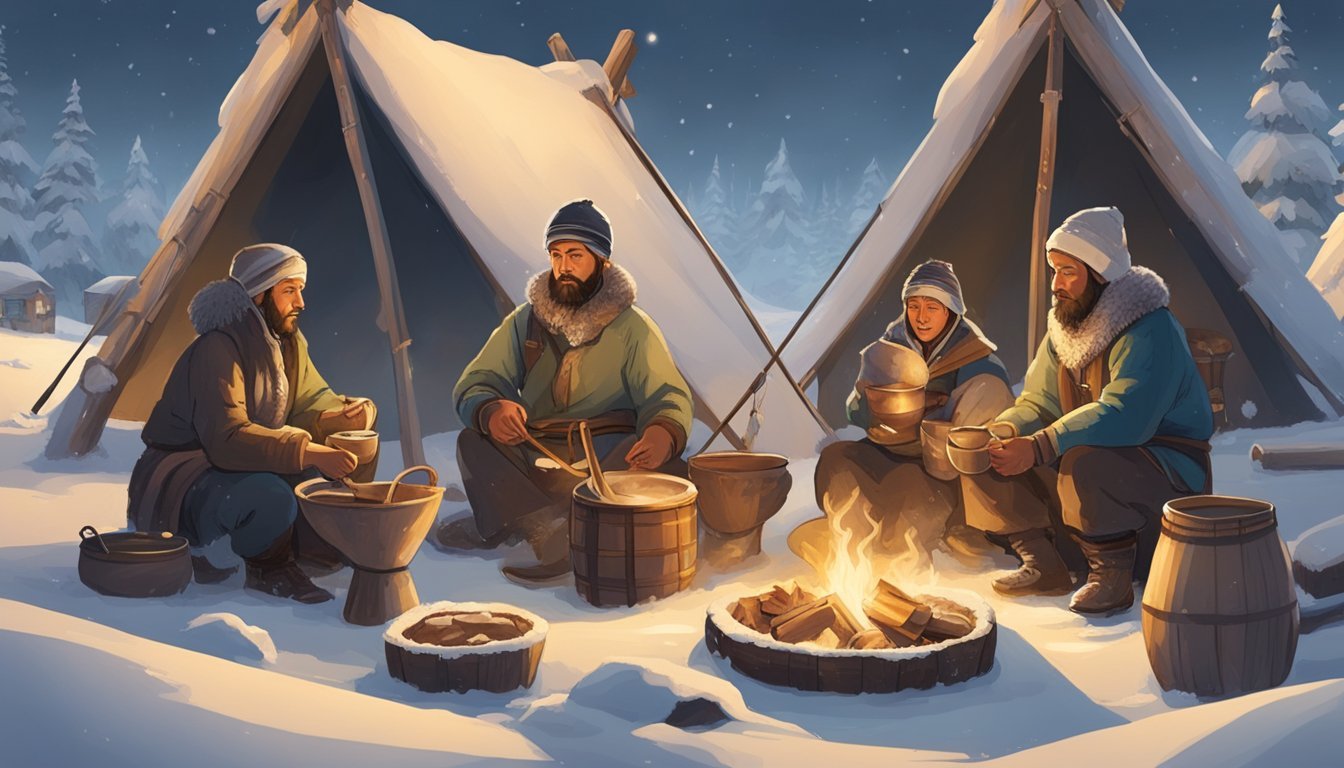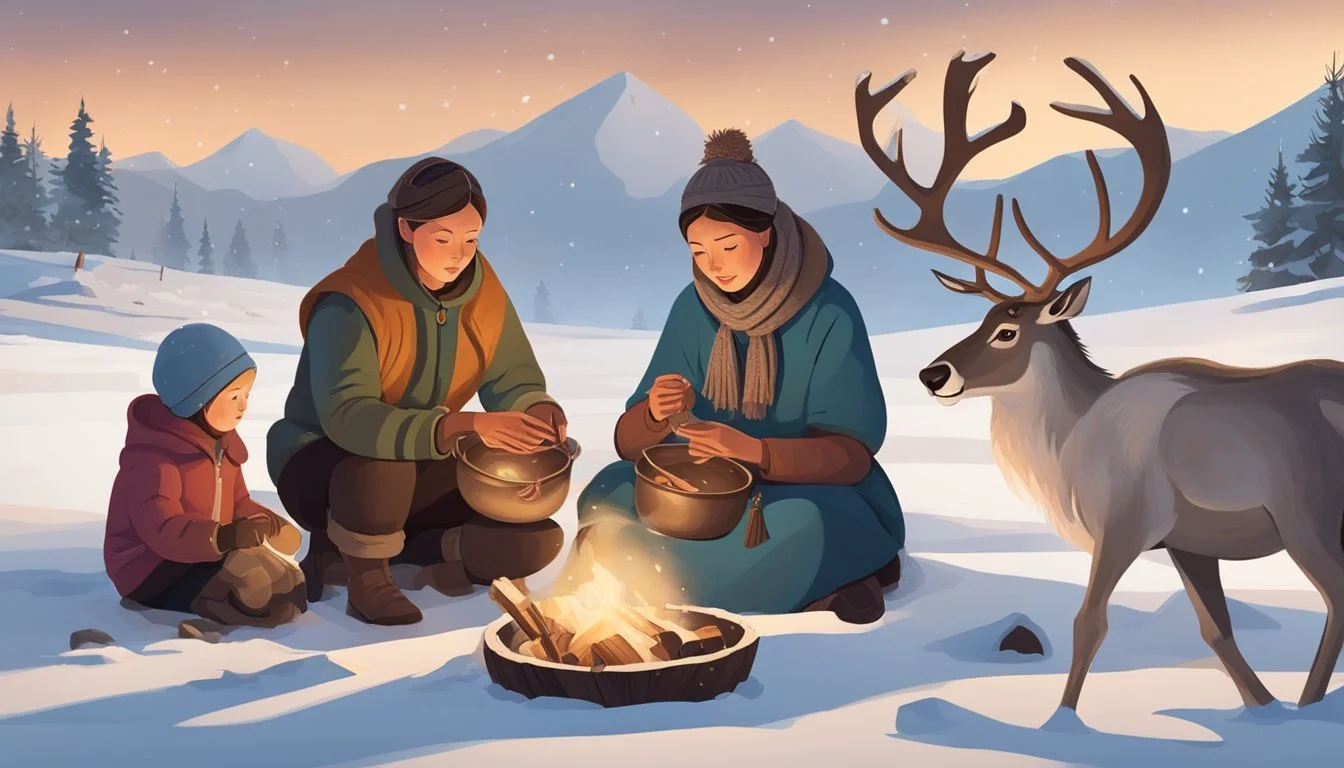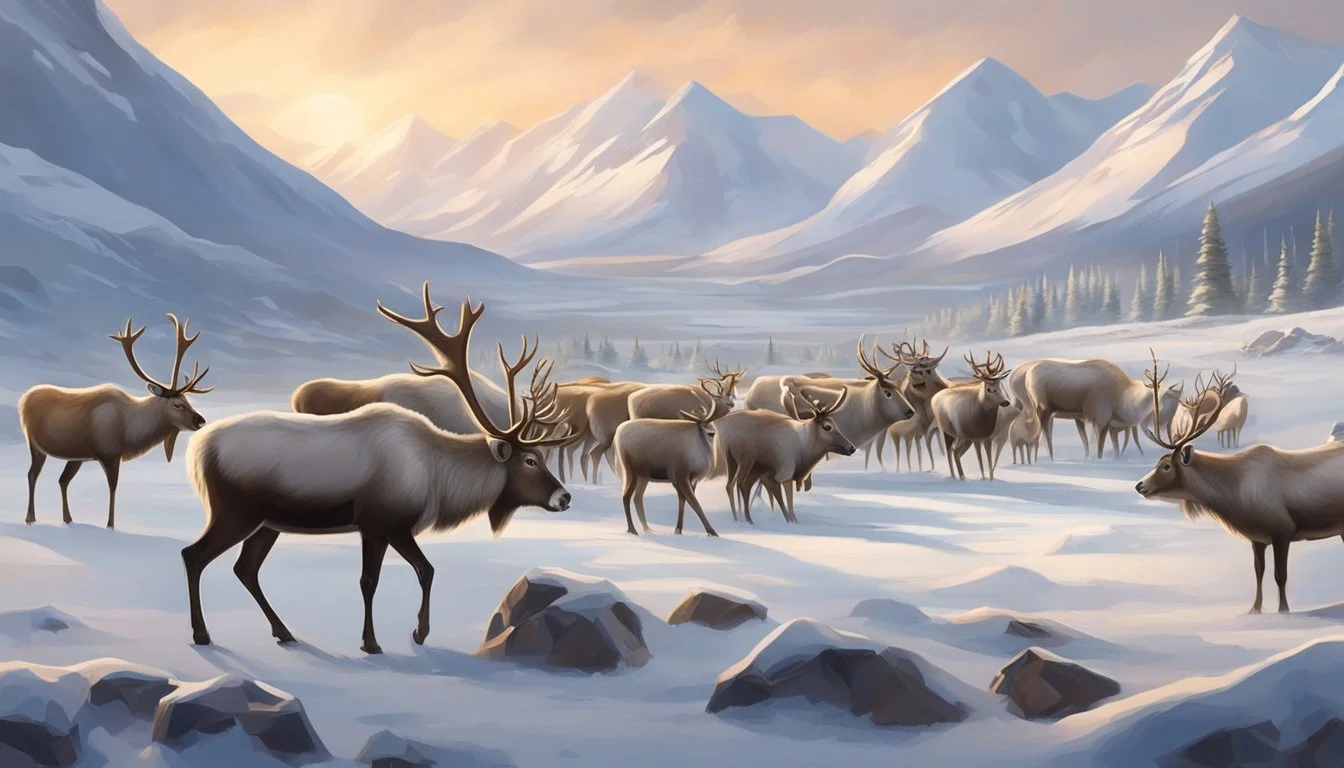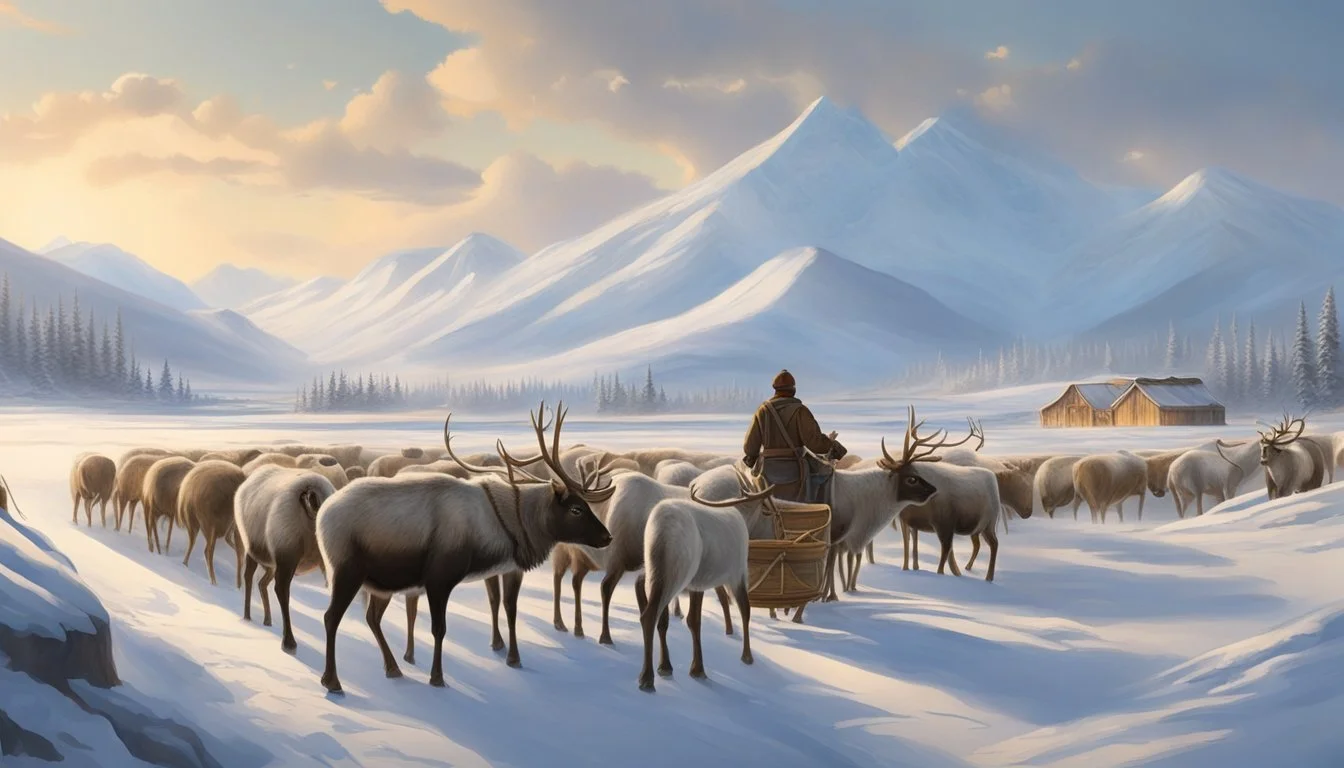Fermented Reindeer Milk
Exploring the Unique Flavors of the Tundra
Within the cold expanse beyond the Arctic Circle, a unique dairy product interweaves with the nomadic cultures that survive in the harsh climates—fermented reindeer milk. This traditional beverage is not just a relic of the past; it's a living testament to the resilience and adaptability of the nomadic herders. For generations, communities such as the Sami of Scandinavia and the Tsaatan of Mongolia have herded reindeer, not only for their meat and hides but also for their milk. Unlike more common dairy animals, reindeer yield a small quantity of rich milk which is often consumed in a fermented form.
The process of fermenting reindeer milk involves allowing the milk to sour naturally, developing a taste distinct from that of milk from cows, goats, or sheep. The low lactose content of reindeer milk makes it easier to digest for some indigenous peoples who have historically depended on it as a staple. More than just a source of sustenance, this fermented milk holds cultural significance, encapsulating a connection to the land and the herds that roam it.
In modern contexts, traditional practices such as fermenting reindeer milk are being looked at anew as potential sources of nutrition and culinary inspiration. While products from reindeer may seem exotic or unfamiliar to many, they are a daily reality for those who coexist with these animals, and for whom the sacred is woven seamlessly into the fabric of everyday life. As challenges like climate change and globalization reach the remote corners where these cultures persist, the continued production of fermented reindeer milk stands as a symbol of endurance and a touchstone of cultural identity.
History and Culture of Reindeer Herding
Reindeer herding is deeply rooted in the survival and cultural practices of indigenous Arctic communities. It represents a rich tapestry of traditions, spiritual beliefs, and socio-economic significance.
Indigenous Peoples and Reindeer Herding
Indigenous groups such as the Sámi have relied on reindeer herding as a cornerstone of their way of life for centuries. The practice of herding is more than merely an economic activity; it encompasses a complex system of knowledge that has been transmitted across generations. For the Sámi, reindeer herding is an integral aspect of their identity and community cohesion.
Centuries of Practice: Herding dates back to the 1600s, shaping indigenous livelihoods.
Herding Knowledge: Transfer of intricate herding techniques between generations is critical for maintaining the tradition.
Economic Impact: Ownership of reindeer is often a sign of wealth and is crucial for the well-being of herding communities.
Spiritual Beliefs and Traditions
Reindeer play a pivotal role in the spiritual worldviews of Arctic indigenous peoples. The Sámi, for instance, have a polytheistic pagan tradition wherein the reindeer is more than just livestock – it is a sacred entity. Due to the comprehensive vocabulary related to reindeer, one can glean their significance in the Sámi's cultural and spiritual life.
Sacred Presence: For indigenous cultures, the reindeer embodies a living, sacred presence.
Ancestral Connection: Reverence for reindeer is often linked with honoring ancestors and their traditions.
The Role of Reindeer in Arctic Societies
In Arctic societies, reindeer are at the heart of survival and cultural identity, much like the whale for the Inuit and the buffalo for the Lakota. The nutritional, economic, and cultural value of reindeer is paramount in these regions.
Nutritional Staples: Reindeer provide essential sustenance, with various products including meat and milk.
Cultural Fabric: Herding practices are interwoven with each aspect of life, from social structures to yearly cycles.
Adverse Conditions: Indigenous herders have mastered the art of thriving in the marginal and harsh landscapes of the Arctic Circle.
Reindeer Biology and Ecology
Reindeer are a unique species, well-adapted to the harsh conditions of the Arctic and subarctic regions. They play a critical role in the ecology of these areas and have a distinct diet that enables their survival.
Adaptation to Arctic Environments
Reindeer (Rangifer tarandus), also referred to as caribou in North America, are highly adapted to life in the Arctic region. They boast a series of physiological and behavioral adaptations that facilitate their survival in extremely cold climates. Their fur, thick with hollow hairs, insulates against intense cold, while large, flat hooves provide stability and mobility in snow and wetlands. Reindeer migrations are epic, spanning up to 3,000 miles yearly, which is one of the longest of any terrestrial mammal, seeking out the best seasonal pastures and weather conditions.
Diet and Nutrition
Reindeer sustain themselves primarily on a diet centered around lichen during the winter months, a food source that is abundant in the Arctic. In the summer, their diet expands to include a variety of plants such as grasses, herbs, and leaves. This varied diet contributes to their nutrition, allowing reindeer to store energy and insulating fat that see them through the lean winter months.
Reindeer and Biodiversity
The presence of reindeer in the Arctic ecosystem has a significant impact on biodiversity. By their grazing, they affect plant community compositions, which in turn influences the habitat and food sources for other wildlife. The domestication of reindeer has long been integral to the culture and economy of indigenous Arctic peoples, providing food, clothing, and income and maintaining biodiversity through traditional herding practices.
Fermented Reindeer Milk Production
Fermented reindeer milk is a traditional dairy product with unique qualities, often associated with the nomadic cultures of the Arctic. This section explores the specialized techniques involved in its production, the healthful composition of this uncommon milk, and the customary methods for its storage and consumption.
Milking and Milk Processing
Reindeer milking requires skillful handling due to the animals' semi-domesticated nature. The process typically occurs twice a day during the short summer months when reindeer produce milk. Milk processing begins immediately after milking to ensure freshness. The fresh milk, notable for its high fat and protein content, is then often combined with specific lactic acid bacteria to initiate fermentation. This fermentation process not only preserves the milk but also enhances its flavor and digestibility.
Health Benefits and Nutritional Value
Reindeer milk is exceptionally dense in nutrients, surpassing cow's milk in both protein and fat content. It contains approximately 9.9g of protein and 15g of fat per 100g, contributing to its rich texture and creaminess. The nutritional profile of reindeer milk is beneficial for muscle maintenance due to its high protein levels, while the minerals present support overall health. Despite its richness, the lactose content is comparatively lower, sitting at about 2.5g per 100g, which can be beneficial for those with sensitivities to lactose.
Storage and Consumption Practices
Traditionally, fermented reindeer milk is stored in cool, dark places to maintain its longevity, allowing nomadic herders to use it as a reliable food source. The fermentation process creates a tart, thickened product similar to cheese, which herders and their families consume regularly. Due to its high fat content, fermented reindeer milk also serves as a significant energy source, essential for survival in harsh Arctic conditions. Its storage practices have been refined over generations, ensuring that this unique dairy product can be enjoyed throughout the year.
Sustainability and Environmental Impact
The sustainability and environmental impact of fermented reindeer milk production involve carefully balancing traditional herding practices with the challenges posed by climate change in the Arctic. It is crucial to maintain the health of the land, mitigate the effects of climate change on the fragile Arctic ecology, and preserve indigenous knowledge for sustainable development.
Herding Practices and Land Use
Herders in Arctic regions rely on wide expanses of land to provide for their reindeer, who in turn graze on a diet of lichens and other arctic flora. Sustainable herding practices are vital to prevent overgrazing, which can lead to the degradation of the land. Proper land use is also key in preserving the delicate balance with local ecosystems and ensuring that resources remain available for future generations.
Climate Change and Arctic Ecology
Climate change is rapidly transforming the Arctic, with frozen terrains thawing at an unprecedented rate and extreme weather events becoming more common. These shifts threaten the natural habitats of reindeer, altering lichen availability and compounding the stress on the region's ecology. The impact of increasing greenhouse gas emissions is also felt here, exacerbating the ecological challenges faced in the Arctic and requiring applied ecology practices to mitigate damage.
Sustainable Development and Indigenous Knowledge
Indigenous peoples have a wealth of knowledge regarding sustainable living in harsh Arctic environments. This knowledge is essential to developing strategies that align with sustainable development goals. By incorporating traditional practices that have minimal environmental impact, such as the sensitive production of fermented reindeer milk, these communities contribute to low-impact living and a smaller ecological footprint. Indigenous ways of knowing offer invaluable insights into maintaining the balance between use and conservation of the Arctic's resources.
Social and Economic Aspects
Within the tapestry of the Arctic Circle's social and economic framework, fermented reindeer milk is more than a dietary staple; it embodies the cultural endurance and evolving economic landscapes of the indigenous communities. This section delves into the dynamic interplay between traditional livelihoods and the contemporary forces reshaping them.
Reindeer Herding as a Livelihood
Reindeer herding is a cornerstone of life for the Sámi people, the indigenous inhabitants of the far northern regions of Scandinavia and Russia. Their heritage and identity are deeply interwoven with the health and vitality of reindeer populations. Herding is not merely a job; it's an intricate component of their social-ecological systems, mirroring the rhythms of the natural world they have thrived in for millennia.
Economic implications:
Primary source of income: For many, the sale and trade of reindeer products, including milk, meat, and hides, are fundamental to their financial stability.
Wealth distribution: Reindeer herding underpins communal wealth and supports barter systems, crucial in remote areas.
Impact of Globalization and Tourism
The thrust of globalization and the burgeoning tourism industry present a dual-edged sword for indigenous herders. On one hand, globalization introduces new markets and potential streams of income, expanding the reach of their traditional products. On the other hand, it brings challenges including commercialization of their way of life and climate change which threaten the very underpinnings of their traditions.
Tourism has grown to be an important economic contributor, allowing indigenous communities to showcase their culture and sell local products directly to visitors. However, this also means grappling with the demands of a consumer market, which may at times conflict with the preservation of their cultural identity.
Tourism revenue: Visits from those eager to experience traditional Sámi culture have increased income for many communities.
Cultural impact: While tourism fosters cultural exchange, it also risks commodifying their traditional way of life, potentially undermining the authenticity of their social practices.
Traditional and Contemporary Uses
Reindeer have long been integral to the subsistence strategies of Arctic and sub-Arctic peoples, with their milk serving a special role in both traditional diets and modern culinary practices.
Reindeer in Food and Craft
Traditionally, reindeer milk is a nutrient-rich food source prized by the nomadic populations of the Arctic Circle. The traditional diet involves a variety of reindeer products, with meat and milk production being central. Milk obtained from reindeer is often consumed fresh or used to make cheeses and yogurts. The slaughter season provides not only meat but also raw materials such as fur for clothing and craft supplies. Reindeer milk, being rich and flavorful, is sometimes used in the making of a unique variety of bread which helps sustain the nomadic communities during long journeys.
Reindeer Products:
Milk: Fresh, cheese, yogurt
Meat: Protein source
Fur: Clothing and crafts
Bones: Tools and art
Modern Applications and Innovations
In contemporary contexts, reindeer milk is sometimes viewed as an exotic ingredient. Innovators in the culinary world have introduced reindeer milk to a wider audience through products like ice cream, incorporating it for its distinctive taste. This milk is also occasionally sweetened with sugar and used in novelty confections, an innovation beyond traditional uses. Despite these modern adaptations, the production methods remain largely traditional, ensuring the survival of age-old traditions within modern applications. The use of reindeer milk contributes to the local economies and indigenous cultures, maintaining sustainable lifestyle practices while meeting the demand for culturally rooted and innovative products.
Innovative Reindeer Milk Products:
Ice cream: A novel gourmet experience
Confections: Enhanced with sugar for a sweet treat
Milk-based beverages: Traditional and modern fusion drinks
The juxtaposition of reindeer milk's traditional applications with contemporary innovations represents the resilience and adaptability of Arctic culinary heritage as it continues to find new expressions in today's global food culture.
Challenges and Future Directions
Fermented reindeer milk is an integral part of the nomadic lifestyle that persists in the Arctic regions. This section examines the pivotal challenges and prospective paths this tradition faces in modern times, encompassing cultural, scientific, and environmental aspects.
Preservation of Cultural Heritage
The traditional practice of fermenting reindeer milk is deeply embedded in the culture of indigenous Arctic communities such as the Sami. Preserving these practices is pivotal as they represent a wealth of traditional knowledge and herding techniques honed over generations. However, challenges include the gradual loss of traditions as younger generations migrate to urban areas and adopt different lifestyles. Ensuring the continuation of these practices demands active engagement from community leaders and supportive policies that safeguard such heritage.
Research and the Scientific Community
Robust research serves as a backbone for understanding the sustainability and health effects of fermented reindeer milk. The scientific community plays a key role by elucidating the nutritional benefits and identifying ideal bacterial strains that can improve fermentation processes. Current challenges include the need for more focused research on the unique microbiota of fermented reindeer milk and the exploration of its potential as a functional food in broader markets. Integrating traditional knowledge with scientific advancements can lead to innovative approaches that benefit both local communities and the health sector.
Adapting to Change in the Arctic Landscape
The Arctic is a region experiencing profound changes due to climate change, impacting permafrost regions, migration patterns of herds, and the overall landscape. Indigenous communities relying on reindeer herding must now navigate a landscape that is transforming more rapidly than ever before. Challenges include the adaptation of herding practices to shifting climate patterns, maintenance of sustainability in the face of ecological shifts, and the protection of permafrost territories. Collective efforts from local, national, and global actors are required to foster resilience within these communities and their way of life.







